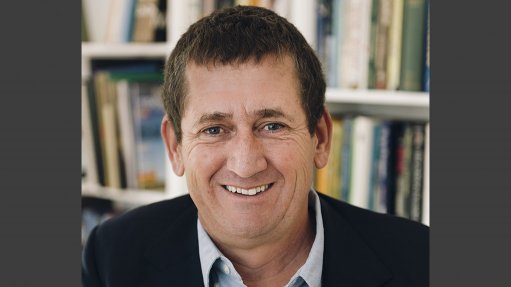
Bernard Swanepoel
Steenkampskraal Holdings Limited (SHL) has appointed Mitford Mundell as its new CEO, with mining veteran Bernard Swanepoel to take up the position of chairperson.
Mundell is the former CEO at Namakwa Diamonds, as well as Africa CEO at Theta Gold Mines, while Swanepoel headed up gold miner Harmony.
The Steenkampskraal monazite mine, in the Namaqualand, has all the regulatory approvals in place to produce monazite concentrate, mixed rare earth concentrate and separated rare earth oxides.
Steenkampskraal was mined by Anglo American from 1952 to 1963, during which 126 280 t of ore produced 59 555 t of monazite concentrate, containing 26 201 t of rare earths, at an average grade of 20.75%.
Mundell says the management team is targeting next year for the start of production from the underground operation and its associated plant.
Swanepoel notes that the shallow orebody is easy to reach, and “that mining will not be challenging”.
“Steenkampskraal is one of South Africa’s most valuable strategic mining resources,” he adds.
“The potential is enormous, and once in production, will place South Africa as one of the alternate sources to China for the supply of the rare earths…mainly neodymium, praseodymium, dysprosium and terbium.
“These rare earths are experiencing significant growth in demand and resultant high prices.”
Neodymium, praseodymium, dysprosium and terbium are used to make magnets for electric vehicles and wind turbines, both facing booming demand.
The total grade at Steenkampskraal of these four rare earths is 3.49%, which is higher than the total rare earth grades of most other rare earth projects, and represent about 92% of the value of Steenkampskraal’s rare earths basket.
China currently dominates the rare earths market, controlling around 97% of supply.
Steenkampskraal will offer a strategic alternative to that line of supply, says Swanepoel.
Steenkampskraal is reported to have reserves and resources which are sufficient to operate the mine at a production rate of at least 2 700 t of total rare earth oxides a year for more than 20 years.
A brownfield exploration programme is expected to bump up these numbers.
The Steenkampskraal mining and processing project will be developed in three phases.
Phase 1 revolves around the production of monazite concentrate, Phase 2 around the production of mixed rare earth concentrate, while Phase 3 is focused on the production of separated rare earth oxides.
Mundell says SHL aims to “move quickly” to phases 2 and 3.
SHL is in the process of commissioning a definitive feasibility study (DFS) for Phase 1.
Mundell estimates that developing the first phase will cost between $15-million and $20-million.
SHL plans to raise initial equity finance of $2-million to cover the DFS and updated Competent Persons Report, as well as working capital for the next six to eight months.
The company believes that the combination of “very high grades, shallow mining depths and existing underground development” will ultimately enable Steenkampskraal to be one of the lowest cost rare earth producers in the world.